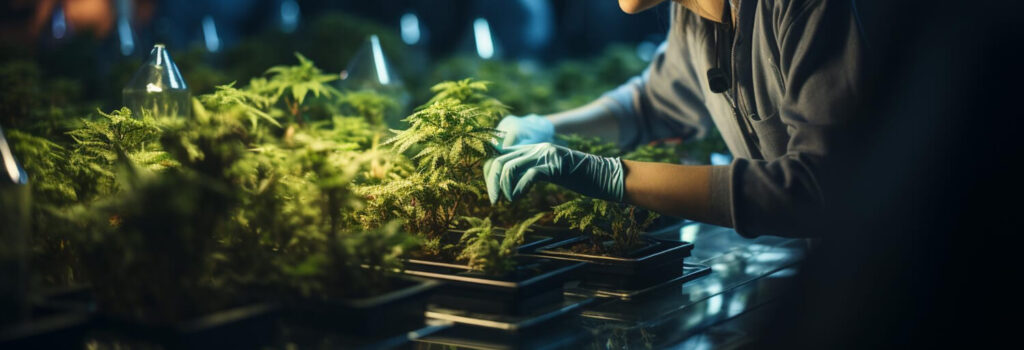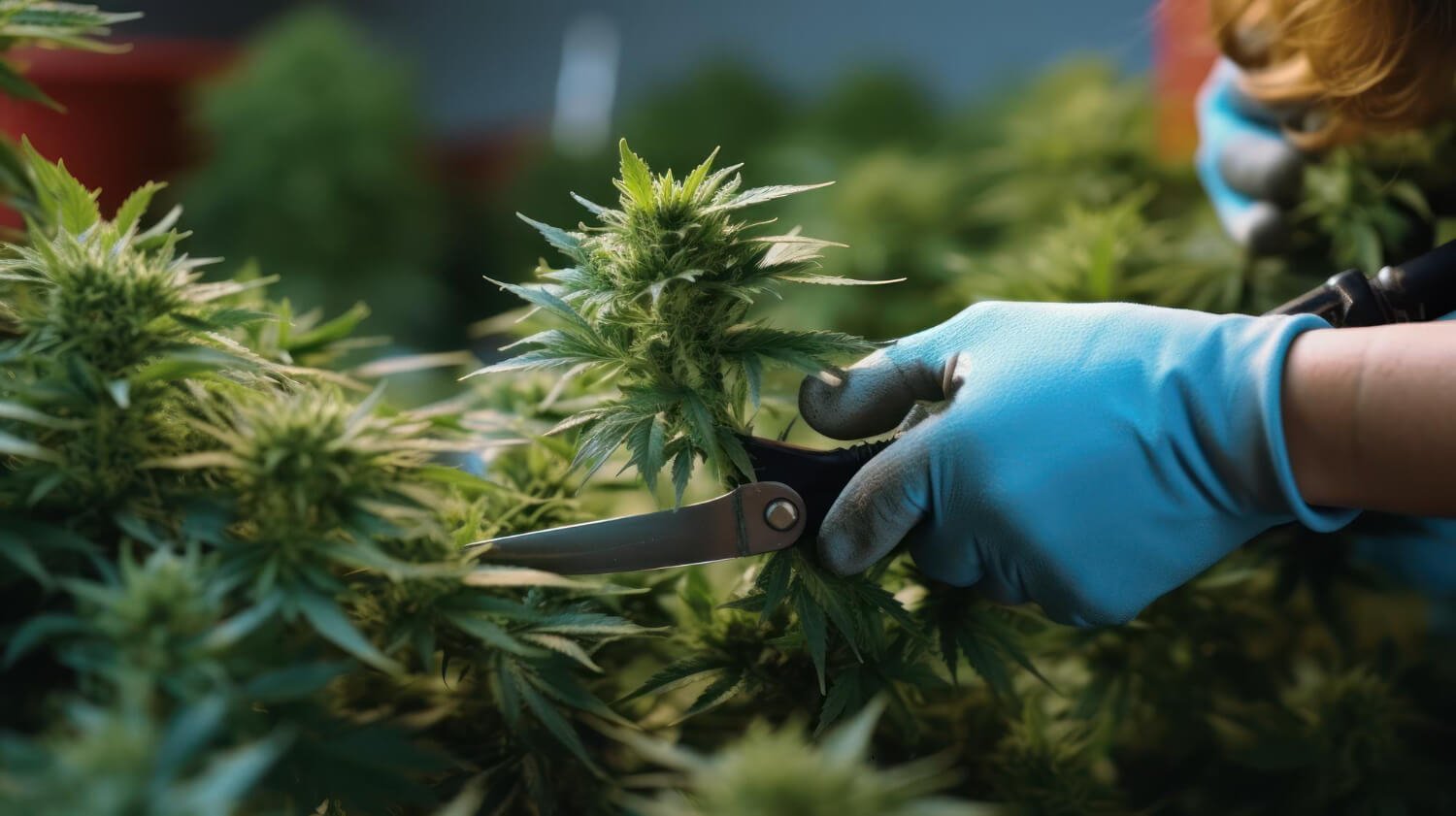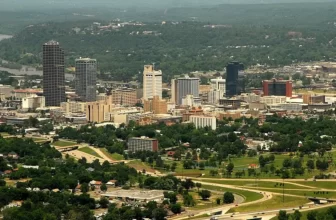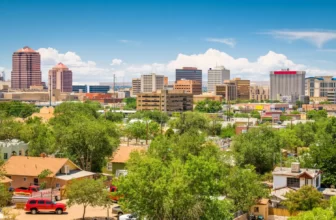Snip, snip, pluck, pluck. Welcome to the ultimate guide to trimming and pruning cannabis plants. Why do we trim and prune cannabis plants? By removing leaves and branches (planting training), we expose our entire plants to more even amounts of light, giving us plants that produce more high-quality buds. But that’s not all, trimming/pruning can improve airflow, which discourages pests and diseases, and promotes our plants to grow wide vs. tall.
Understanding Trimming and Pruning Cannabis Plants
While the terms are often used interchangeably, there are some subtle nuances between trimming and pruning. First, it’s important to understand that cannabis cultivators like using their own terms for methods well-established in plant cultivation. This is especially true here because different plant training methods produce different plant structures. Then, not all plant training methods involve removing plant material.
For example, instead of saying they are pruning — which is the removal of branches, leaves, and bud sites while the plant is still alive — cultivators will often say the specific plant training method they are using, e.g., topping.
Trimming, on the other hand, typically refers to the removal of excess leaves and small foliage from the buds, especially after harvest, e.g., wet trimming vs. dry trimming. The term trimming is much more common to hear in the cannabis cultivation world.
Another way to look at it is that pruning is the more involved process, i.e., removing entire branches to change plant structure vs. trimming, i.e., removing leaves to keep it tidy to manage plant structure. However, no one is going to fault you for swapping the terms around.
When to Trim Cannabis Plants
To maximize yield and promote healthier plants, cultivators will typically trim and prune their plants multiple times throughout the growth cycle.
Early Vegetative Stage
When given adequate light and an optimal VPD, trimming and pruning can often be started around the 2-week mark, which aligns with the start of the vegetative stage. Plants should have around 5-7 nodes at this point. For creating an even structure and number of bud sites, topping or mainlining is best. But if you just want to maximize the amount of bud sites and don’t care about a messy structure, FIMing is a great technique.
Regardless of the method, go slow the first time you trim/prune your crops. If you need to transplant your crops, you want to do that a few days before or after making the first cuts so plants can recover. Allow plants to fully heal before pruning again.
Mid to Late Vegetative Stage
After you have transplanted your plants into their final medium and they have made a full recovery, comes the time when you can be most aggressive with trimming. During this time, your plants should be trimmed to the desired structure you want. For many growers, especially those indoors, that means the plants have been topped at 2-4 times while branches and bud sites on the 1st node have been completely removed.
Early Flowering Stage
During the first 2 weeks after initiating a 12/12 light schedule, plants are in their pre-flowering stage. Growth is rapid, and cultivators should be diligent about creating an even canopy through low-stress training, e.g., scrogging or supercropping. Some hard stress training to remove bottom stems and bud sites that are failing to reach adequate light is OK. Don’t get too aggressive removing fan leaves and lollipopping, as each is a satellite that can promote a greater rate of photosynthesis.
Mid to Late Flowering Stage
Hopefully, you got all the trimming you needed to do before this stage, as we really don’t want to ‘hurt’ our plants in any way, as they are completely focusing their energy on flower development. Hinder that in any way and you’ll likely see a loss in potential yield. I suggest only pruning during this stage if it means removing fan leaves to open the canopy for more airflow.
Trimming Techniques
So what can we all remove from our cannabis plants? Well, surprisingly pretty much whatever we want!
Stems / Branches
Cutting the main stem in half and removing more than half the plant material sounds unhinged, but that’s what many growers do to their cannabis plants when they are just a few weeks old. The main reason we cut the main stem (terminal bud) and various upper-side branches is to redirect energy to lower axillary bud sites. However, many cultivators remove branches to shape their plants into interesting designs or to keep the plants small enough for their space.
Fan Leaves
Fan leaves are the biggest leaves on the cannabis plant, and because of that, many growers like to remove fan leaves that are blocking bud sites. This is OK, however, many growers get carried away, removing too many. But this will stop a plant from reaching its full photosynthetic potential. Indoor cultivators usually find they need to remove more fan leaves near the bottom of their plants than outdoor cultivators. Most growers remove all the fan leaves fairly soon, if not immediately, after harvesting.
Sugar leaves
Sprouting from the colas, these small arrowhead-shaped leaves won’t appear until your plants are in flowering. You do not need to touch these leaves when the plant is still alive. How much of the sugar leaves you remove after harvest and when (wet vs. dry trimming) is up to you. I go off trichome amounts.

Pruning and Topping Techniques
Apical Pruning (Topping)
If you let a cannabis plant grow without breaking apical dominance, you’ll notice that it grows into a shape that resembles a pine tree. This is OKish when growing outdoors, but not great for indoor grows due to the vertical height these plants grow to. As well, the inverse square law of light really affects any growth setup using supplemental light.
Usually referred to as topping, by cutting above a node spot on the main stem (typically the 3rd or 4th node, energy is redirected into producing two main growing shoots instead of one. This can be done multiple times on various branches to create several main bud sites instead of just one. It also allows bud sites further down to grow faster and stronger.
Lollipopping
Named after the shape it produces, unlike topping, which redirects energy downwards, lollipopping directs energy upwards by removing the lowest leaves, branches, and bud sites. If left intact, lower buds steal energy and nutrients away from bigger buds but struggle to get to their size and potency. Lollipopping is most common during late veg and pre-flowering, as it becomes easier and easier to tell which branches aren’t going to make it to the top of the canopy.
FIM
Standing for Fuck I Missed, by only removing two-thirds of a node (removing part of the apical meristem), cultivators can promote that single node to morph into 2+ main growing shoots where a single topping will only give you 2.
Post-Trimming Care
Cannabis plants are incredibly durable and do great with aggressive plant training techniques that remove branches, leaves, and bud sites. However, this doesn’t mean you can just start cutting off plant material and hope for the best.
When you’re new to trimming and pruning, you never want to remove so much material that lights, water, and fertilizer levels need to be notably adjusted. It’s typical for plant growth to come to a near halt for a few days while they recover, and they may droop a bit. However, each day after transplanting, you should notice growth increasing and the leaves springing outwards for life. Once plants have returned to their original state, plants can be trimmed and pruned again.
Final Thoughts
When looking to grow cannabis plants, you need to become comfortable with pruning and trimming because there are going to be various points in the growth cycle where it’s essential. In fact, your plants will thank you for it as it opens more bud sites to better airflow and light exposure. And you’ll be rewarded with healthier plants that produce better yields.






Thankyou for the info
Very helpful